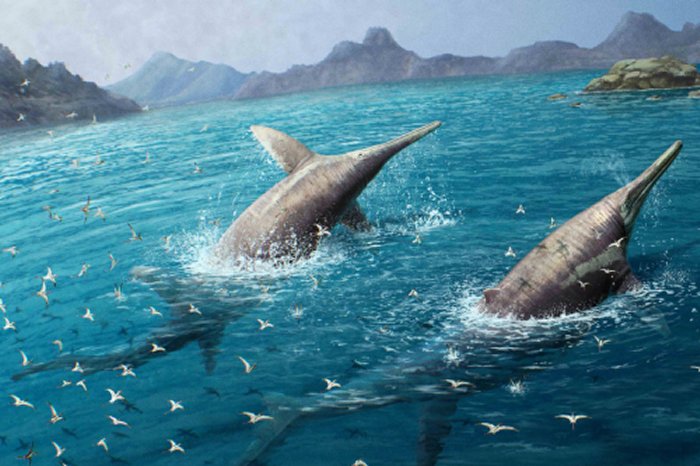Jan Bartek – AncientPages.com – A significant fossil discovery has provided valuable insights into the history of dinosaurs in Wales. Until recently, the land of the dragon lacked any evidence of dinosaur presence. However, several dinosaur fossils have been reported over the past decade, although their living conditions remained largely unknown.
Credit: Adobe Stock – Olga
In a new study conducted by a team from the University of Bristol and published in the Proceedings of the Geologists’ Association, crucial details about the early Welsh dinosaurs have been unveiled for the first time. The researchers found that these dinosaurs, dating back over 200 million years, inhabited a tropical lowland area beside the sea. Dinosaur trackways discovered in Barry and nearby sites indicate that these prehistoric creatures walked across the warm lowlands.
This discovery sheds light on the environment and habitat where the early Welsh dinosaurs thrived, providing valuable insights into their ecological conditions and behavior.
The significant discovery was made at Lavernock Point, situated near Cardiff and Penarth, where the dark-colored shale and limestone cliffs provide a geological record of ancient shallow seas. At various levels within these rock formations, accumulations of fossilized bones have been found, including the remains of fish, sharks, marine reptiles, and, in some instances, dinosaurs. These fossil deposits offer valuable insights into the diverse marine life that inhabited these prehistoric environments.
“The bone bed paints the picture of a tropical archipelago, which was subjected to frequent storms, that washed material from around the surrounding area, both in land and out at sea, into a tidal zone. This means that from just one fossil horizon, we can reconstruct a complex ecological system, with a diverse array of marine reptiles like ichthyosaurs, plesiosaurs and placodonts in the water, and dinosaurs on land.
“I had visited the coast at Penarth all my life, growing up in Cardiff, but never noticed the fossils. Then, the more I read, the more amazing it became. Local geologists had been collecting bones since the 1870s, and most of these are in the National Museum of Wales in Cardiff,” Former student of the Bristol MSc in Palaeobiology Owain Evans, who led the study, explained.
“The collections from Lavernock go all the way back to the 19th century, with many sections of the bone bed being collected over the years. The presence of dinosaur fossils at the site ensure that it remains one of the most significant localities for palaeontology in Wales,” Cindy Howells, Curator of Palaeontology at the National Museum of Wales said.
Artist’s depiction of a British Archipelago during the Triassic. Credit: Gabriel Ugueto
Two significant discoveries were made by the team during their fieldwork at Lavernock: the fossilized remains of a placodont osteoderm and a single coelacanth gular bone. According to Dr. Chris Duffin, the supervisor, the remains of coelacanths and placodonts are relatively uncommon in the UK, making these finds even more remarkable. These two fossils alone contribute to a broader understanding of the Rhaetian period in the UK.
Footprint found in Triassic rocks from South Wales. Credit: Cindy Howells at the National Museum of Wales
“The volume of dinosaur remains found at Lavernock is extremely exciting, and is a chance to study a complex, and often mysterious period in their evolutionary history. We have identified the remains of a large Plateosaurus like animal, along with several bones which likely belonged to a predatory theropod,” Professor Michael Benton from Bristol’s School of Earth Sciences, another project supervisor, adds.
The research paper dedicates a substantial portion to the abundant microfossils discovered at the site, encompassing fish teeth, scales, and bone fragments. Through a meticulous examination of thousands of specimens, the team successfully identified the key species inhabiting the shallow seas during that period and determined the relative significance of each species within the ecosystem. This comprehensive analysis has shed light on the origins of the fossils colloquially referred to as “Welsh dragons,” providing a scientific explanation for their presence in the region.
The study was published in Proceedings of the Geologists’ Association
Written by Jan Bartek – AncientPages.com Staff Writer







Recent Comments